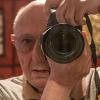Search the Community
Showing results for tags 'tenshodo brass models'.
-

Riding JNR from 1962 to 1966 - Memories Part Three
amszterpeter posted a topic in Travel: Tips, Planning & Memories
While staying in Japan during the early 1960s, I had a large number of colleagues and friends who regularly rode the trains. Two stand out as real rail-fans. A fellow by the name of McDougal, regularly visited local hobby shops and every payday, twice a month, for a period of four years he purchased an HO scale brass locomotive. He liked old steam and mostly purchased brass produced by the Tenshodo company. It is an interesting story: Tenshodo was a major watch and jewelry store located on an expensive parcel of land on the Ginza, in Tokyo. After the disastrous end of the war, the economy was in shambles and no one could afford to buy jewelry or watches. Tenshodo had an abundance of skilled jewelry craftsman and the capability to manufacture in metal. Someone at the company had the bright idea of producing high quality HO brass model trains for the Occupation troops and later to the American military personal who were stationed in Japan. The venture succeeded and Tenshodo survived the economic downturn. Once Japan recovered, and especially during the boom years of the 1960s, the company returned to its root business of selling high quality imported and domestic watches, as well as manufacturing jewelry. The brass model business was slowly phased out; first it was outsourced to Korea, later production runs became fewer and prices rose with inflation. While in the early 1960s a Tenshodo brass engine retailed for US$ 10 to 15, by the lathe 1970s prices increased over the $100 mark. The store itself was rebuilt into a narrow high rise with the Omega watch company's symbol on the top floor. The Green Max company, manufacturers of Japanese plastic structure kits, reproduced the building and it was on sale in the 1980s. The Ginza Tenshodo store maintained its hobby shop on the top floor of their building and it remained a popular destination for model railroad hobbyists, both local and foreign visitors. Another railroad nut friend, his name was Jerry Day, loved looking at working trains. Near the U.S. Air Force base of Yokota in Western Tokyo, was the small town of Haijima. It was a relatively small local station on the Ome-line that connected Tachikawa to Okutama. Haijima was also the terminal point for the Itsukaichi-line. In addition, there was a small yard with a highway overpass right by over the yard throat. Jerry used to spend his Saturday mornings sitting on the highway embankment and watch a little steam kettle of a switch engine work the yard. Since he was also a trained photographer, he also accumulated a collection of pictures of the various engines and cars that populated the yard. Most freight cars were of the old style LCL type covered wagons, but by the mid-1960s the first green JNR 20' containers appeared. There were also smaller containers, but can't recall their size. Fork lifts could put the containers on and off from little trucks that could maneuver the narrow Japanese roads. Some of these little trucks were three wheelers and enter areas where a normal size rig would not fit. I also recall that the Yokota Base had a hobby and recreational center with a fairly large room dedicated to the model railroaders. A large HO gauge layout was a work in progress, but I can't recall what prototype was followed. The base hobbyshop also carried model railroad equipment, mostly locally sourced, and it was the least expensive source for brass locomotives and rolling stock in Japan or anywhere else for that matter. I wish I had bought and saved some myself, even though I could not be using them now as this was way before the popularity of N scale. More later.

